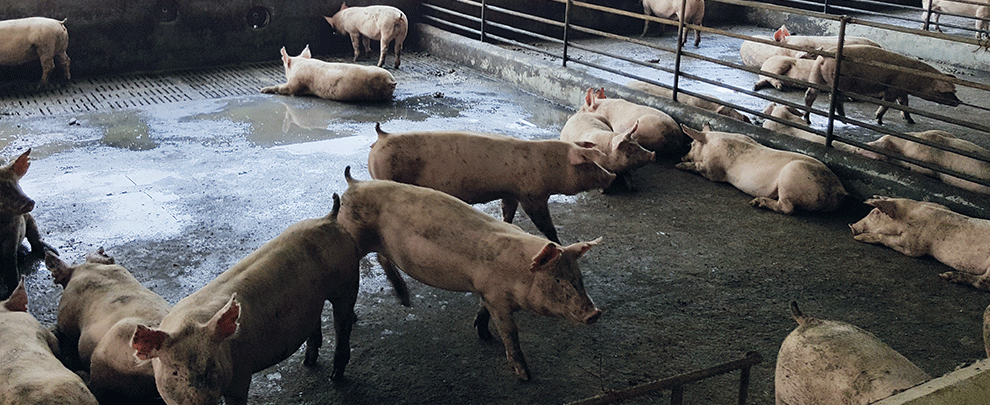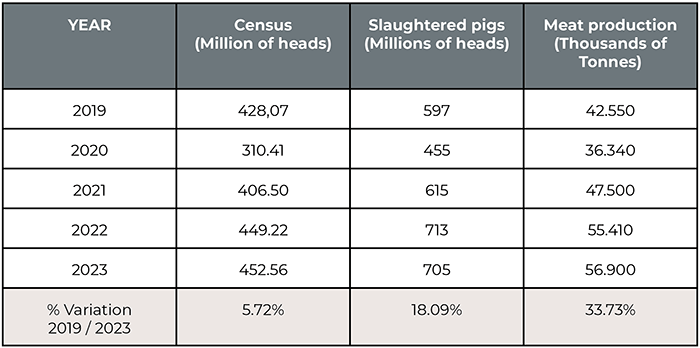Blog
Blog

China is consolidating the recovery of its pork sector
21st August 2024 - News
China is one of the most critical players in the pork industry worldwide. And, despite the severe crisis that Chinese pigs experienced due to African swine fever (ASF) and the impact of the COVID-19 pandemic, the country is the world’s largest pork products producer, consumer, and meat importer. In 2021, it began a process of recovery of its production, with the reduction in imports that this entailed. This trend intensified in 2023 when China reached pork production of 56.9 million tons, 2.6% higher than that recorded the previous year. In this way, Chinese production accounted for 49.3% of all world pork production.

Structure and particularities of the sector
China accounts for around 58% of the world’s pig census. According to data from 2023, the country has 452.6 million pigs and 40 million registered breeding sows. In addition, its industry has more than 1,900 giant pig farms, which have been expanding in recent years to different Chinese regions within the framework of the State Plan for the Regulation of Pig Production Capacity, whose objective is to adjust supply. Demand in the Chinese pork market is also needed to achieve total productive self-sufficiency. However, although pork production in China is recovering its pre-2019 numbers, its pig census has been slightly reduced in the last year.
On the other hand, since ASF arrived in China in 2018, outbreaks have continually emerged in different regions. However, thanks to health control and the technical means that the Chinese authorities made available to the pig industry, the outbreaks have been increasingly less virulent and with less impact. This fact has meant a slight rebound in the price of pork during 2023, which has positively affected the economy of many pig farms. In recent years, however, increases in production costs have significantly reduced their profitability.
Consumption and market
It is no secret that pork is very popular in China and is the primary source of protein for its consumers. In 2023, per capita consumption exceeded 42.1 kilos per inhabitant per year, a figure well above any other product of animal origin. Despite its extensive production, the high consumption of pork by the Chinese population makes the import of this food essential. Thus, in 2023, China consumed 59.4 million tons of pork, or in other words, 51.7% of all pork consumed worldwide that year. To cover this consumption, it was necessary to import 2.68 million tons of this food for a value of 5,872.6 million euros.
Spain remains the leading pork supplier to China, and in 2023, it contributed 26% of pork purchases to this market. Spain sold 560,488 tons of pork to China, totalling 1,223.16 million pigs (2.33 euros /kilo exported). These exports consisted mainly of frozen meats, offal, cured hams and shoulders, and cooked hams and shoulders. Other major exporters to China are the United States (15.9%), Brazil (15.8%), Netherlands (9.0%), Canada (9.0%), and Denmark (8.80%).
These figures demonstrate Chinese pork imports’ great potential in the global pork market, where exchanges occur yearly. The figures are close to 9.6 million tons.
Future forecasts
According to forecasts from the United States Department of Agriculture (USDA), pork production is expected to decline by around 3% due to the slight reduction in the pork census. This reduction could impact imports, which could grow, although marginally. Regarding consumption, a slight drop has also been forecast.
Source: Interporc.








